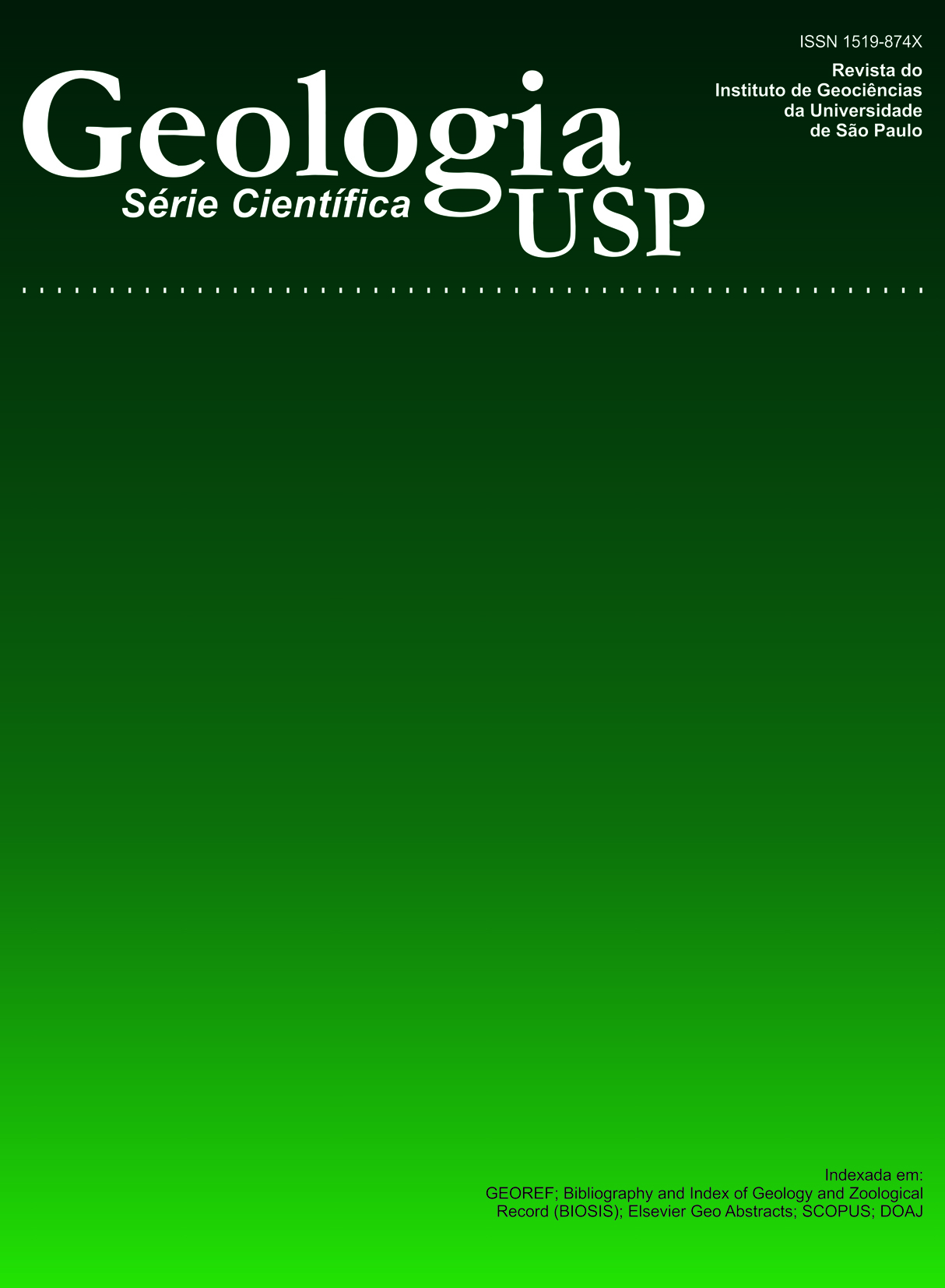As jazidas de talco no contexto da história metamórfica dos metadolomitos do grupo Itaiacoca, PR
DOI:
https://doi.org/10.5327/S1519-874X2006000100002Keywords:
metadolomite, talc, talcification, Itaiacoca GroupAbstract
Four main types of talc occurrences have been recognized in the Proterozoic metadolomites of the Itaiacoca Group, Paraná State, southern Brazil: a) talc schists along transcurrent shear zones; b) incipient talc formation along fractures and bedding planes; c) irregular pockets of fine-grained, massive talc; d) retrometamorphic talc associated with lenses of olivine, diopside, tremolite, calcite and quartz in the contact zone with the neighbouring granites. Of these, only types (a) and (c) form ore deposits. The Itaiacoca Group underwent four metamorphic episodes: 1) greenschist facies regional metamorphism during the Neoproterozoic Brasiliano orogeny; 2) thermal metamorphism along the contact with the Neoproterozoic Cunhaporanga granite batholith; 3) hydrothermalism related to transcurrent shear zones, that formed large volumes of talc schists and irregular pockets of fine-grained massive talc; 4) small-scale thermal metamorphism related to Mesozoic diabase dikes. The Itapirapuã transcurrent shear zone marks the contact between the Itaiacoca Group and the Proterozoic Três Córregos granite batholith, and the main talc deposits are aligned along its branches. Enhanced permeability due to shearing provided channels for percolation of the silica-rich aqueous solutions that reacted with the metadolomite to form the talc deposits. Minor amounts of talc occur along fractures and sedimentary layering. The massive pockets of talc (type c) that replaced the metadolomite probably formed statically at lower temperatures by the activity of hydrothermal fluids introduced through a network of microfractures.Downloads
Download data is not yet available.
Downloads
Published
2006-03-01
Issue
Section
Articles
License
Authors who publish in this journal shall comply with the following terms:
- Authors keep their copyright and grant to Geologia USP: Série Científica the right of first publication, with the paper under the Creative Commons BY-NC-SA license (summary of the license: https://creativecommons.org/licenses/by-nc-sa/4.0 | full text of the license: https://creativecommons.org/licenses/by-nc-sa/4.0/legalcode) that allows the non-commercial sharing of the paper and granting the proper copyrights of the first publication in this journal.
- Authors are authorized to take additional contracts separately, for non-exclusive distribution of the version of the paper published in this journal (publish in institutional repository or as a book chapter), granting the proper copyrights of first publication in this journal.
- Authors are allowed and encouraged to publish and distribute their paper online (in institutional repositories or their personal page) at any point before or during the editorial process, since this can generate productive changes as well as increase the impact and citation of the published paper (See The effect of Open Access and downloads on citation impact).
How to Cite
Szabó, G. A. J., Andrade, F. R. D. de, Guimarães, G. B., Carvalho, F. M. de S., & Moya, F. A. (2006). As jazidas de talco no contexto da história metamórfica dos metadolomitos do grupo Itaiacoca, PR . Geologia USP. Série Científica, 5(2), 13-31. https://doi.org/10.5327/S1519-874X2006000100002





